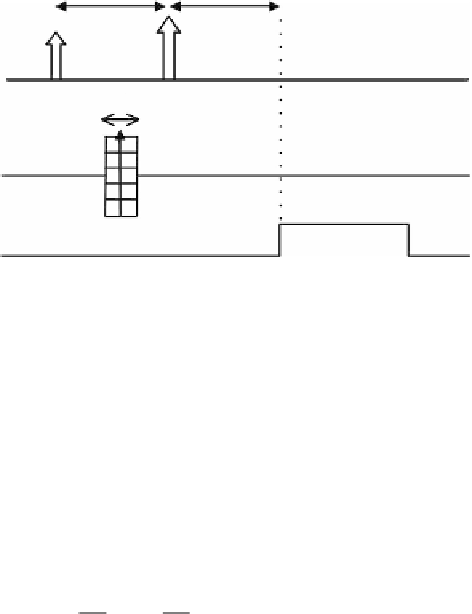Image Processing Reference
In-Depth Information
TE/2
TE/2
90
180
rf
τ
G
N
ADC
FIGURE 11.12
The scheme of the 1-D spin-echo CSI sequence.
After application of the refocusing pulse at time TE, data are sampled as a second
part of the spin echo.
The whole sequence is repeated N times with repetition time TR, while the
gradient strength G is changed in N equidistant steps
∆
G from the value G
min
=
−
∆
G(N/21) as depicted in Figure 11.12.
Denoting G
l
as the gradient strength of the l-th phase-encoding step and
introducing variable k
l
GN/2 to G
max
=
∆
γ
π
τ
γ
π
τ
k
=
G
=
l
∆
G
l
=−
N N
/ ....
2
/
2
−
1
(11.3)
l
l
2
2
the spatially dependent phase shift
φ
l
(x) corresponding to l-th phase-encoding
step equals
k
l
x.
Because the overall measured signal S(t) is the sum of all elementary signals
s(t,x) distributed along
x
axis, taking the additional phase into account, we can
for a measured signal write S(t, k
l
) as a function of k
l
φ
l
(x)
=
-2
π
∫
l
x
St k
(,
)
=
stxe
(, )
−
i
2π
k
dx
(11.4)
l
sample
The measured signal S(t, k
l
) is the continuous Fourier transform (FT) of
the signals s(t, x) from elementary volumes. The positions of N voxels along
the
x
axis can be reconstructed by the inverse discrete Fourier transform
(DTF
−1
).
The 1-D sequence can be easily extended to 2-D (
Figure 11.13a
) or 3-D
(Figure 11.13b) variants. In 2-D and 3-D CSI, 2 and 3 orthogonal phase-encoding
gradients are applied, respectively. In reality, as shown in Figure 11.13, the
nonselective excitation pulse is often replaced by a frequency selective pulse







































Search WWH ::

Custom Search